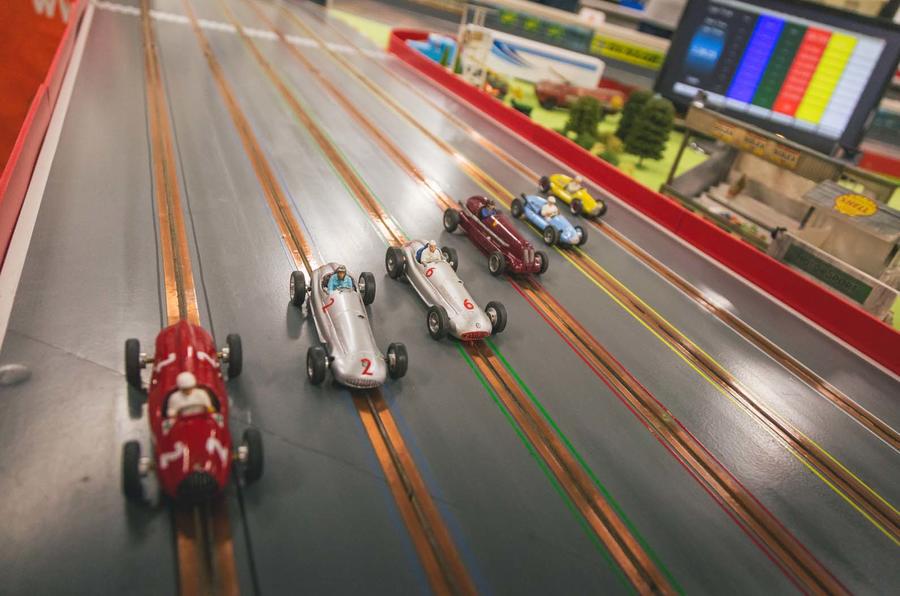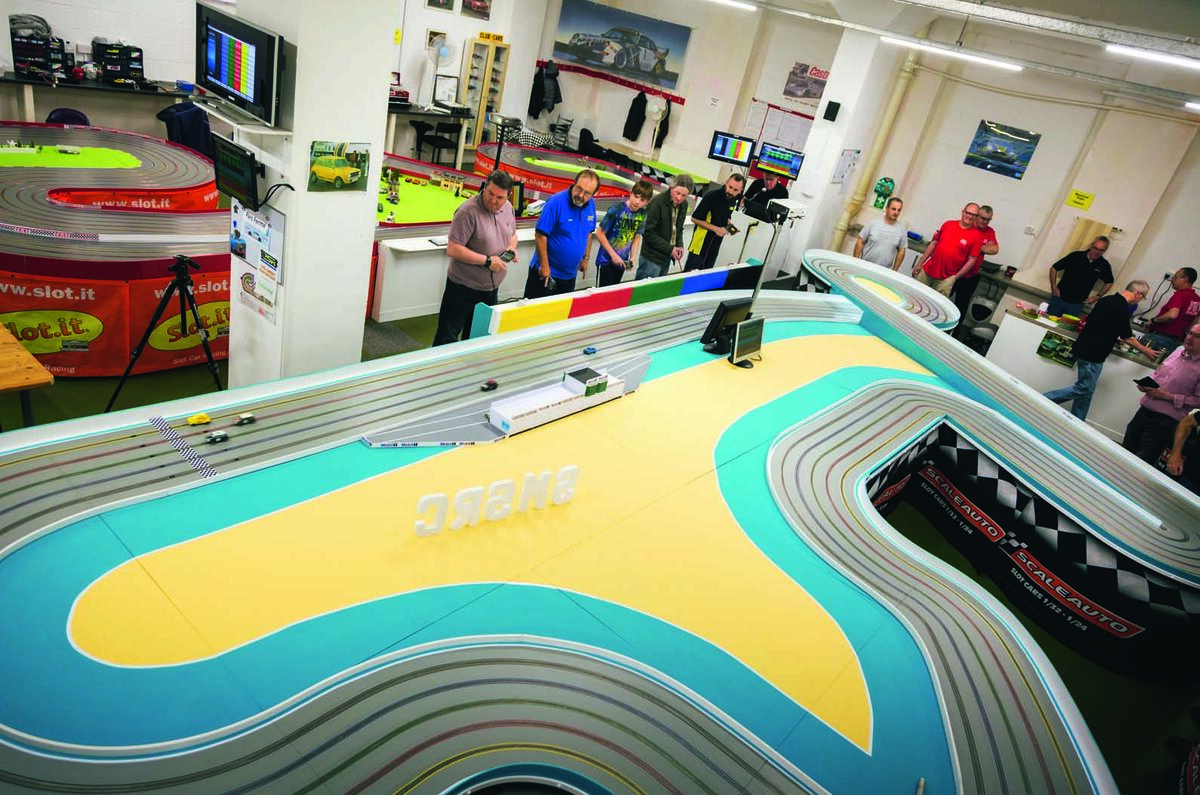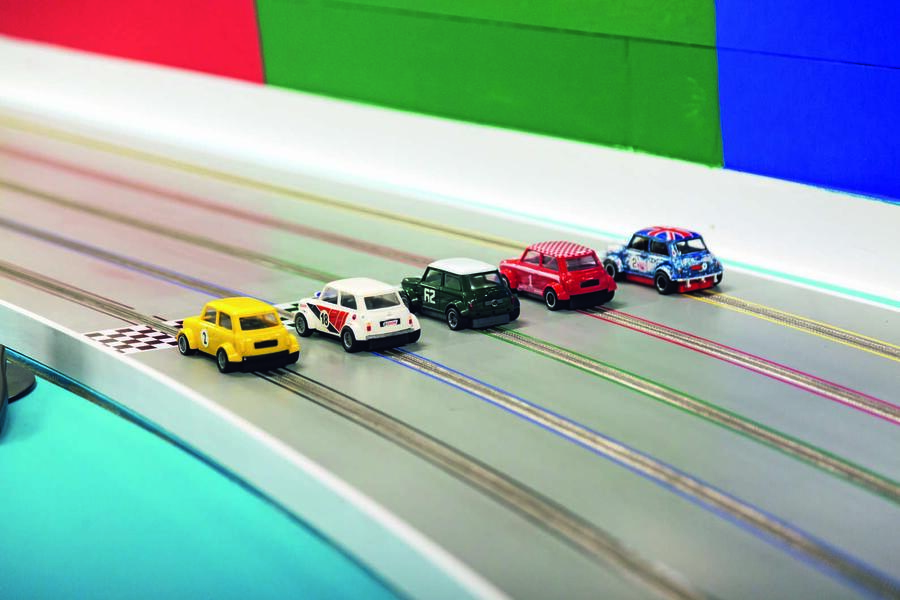Scalextric on steroids, they call it, and once you’ve done a lap of the 110-foot, five-lane track with the 1:32-scale cars (seasoned ‘drivers’ do it in around 7.5sec at speeds equivalent to 290mph), you’ll understand why.
‘They’ are members of the South Manchester Slot Racing Club in Stockport, located in an old mill whose tall, brick-built chimney miraculously escaped the attentions of Fred Dibnah and his sledgehammer. Tracking them down deep in the building’s labyrinth of corridors isn’t easy but is worth the effort, especially if you’re coming for one of the club’s taster evenings when they lend you a car and controller, and let you loose on their two large and sturdy tracks.

Forget kneeling on the carpet amid a tangle of control wires, reattaching sections of track or scrabbling over opponents to fish your car out from under the sofa. This is proper, grown-up, organised Scalextric – correction: slot-car racing – where you stand up, race cars on a rigid track and a team of marshals relocates your motor when it flies into the barrier. Depending on the class, some of the cars the club races are heavily modified Scalextric cars while others are made by, for example, Slot.it, a leading Italian manufacturer.
Russ Monkman, a member of the club, shows me two of his Scalextric-modified Mini Coopers and an unmodified one, for comparison. Turned over, it’s obvious how different they are. The Scalextric model’s large motor, which spins at around 18,000rpm, white plastic pinion gear, trailing wire and pick-up bushes are instantly familiar.


























Join the debate
Add your comment
Nice pot on Auto car
I really liked reading your post! Very high quality content and useful information. With such a valuable blog I believe you deserve to be ranking even higher in the search engines.
tex
Autocar goes slot-car racing
Nice blog about Autocar goes slot-car racing. You can also visit for ‘Benefit in Kind’ rule accelerated the sale of electric cars and car insurance Ireland.